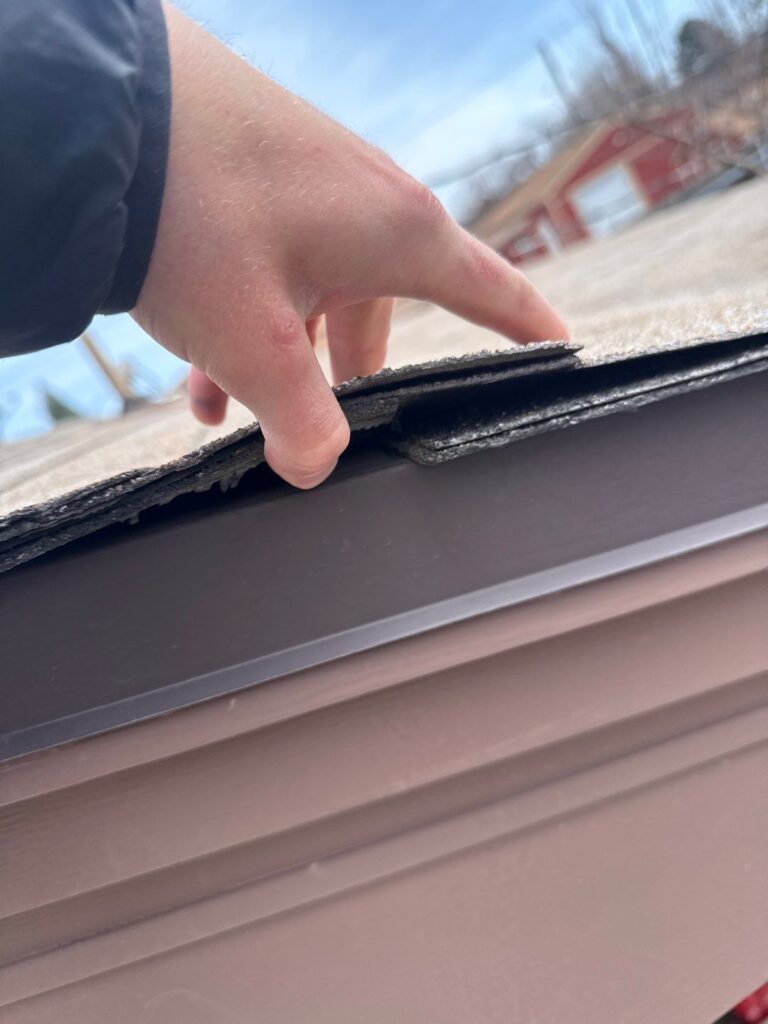The Critical Role of Regular Roof Inspections
We emphasize routine roof inspections as the frontline defense against long-term damage. Denver’s climate, known for snow, hail, and fluctuating temperatures, accelerates wear on roofing materials. Inspections conducted semi-annually—or after severe weather events—help uncover hidden problems before they worsen. From shingle deterioration to subtle leaks, proactive checks prevent structural issues, water intrusion, and insulation damage.
Homeowners should hire professional Denver roofing contractors to thoroughly assess flashing, underlayment, ventilation systems, and drainage integrity. A neglected inspection schedule leads to escalating repairs and early roof replacement.
How to Detect Early Signs of Roof Damage
1. Discoloration and Ceiling Stains
Ceiling watermarks and peeling paint are early indicators of leaks. Moisture infiltration typically stems from compromised flashing or damaged underlayment, especially around chimneys, skylights, and vent boots. Addressing stains immediately prevents mold development and attic rot.
2. Curled, Cracked, or Missing Shingles
Shingles showing signs of curling or cracking compromise your roof’s ability to resist wind and precipitation. In Denver’s high-altitude sun exposure, asphalt shingles dry and warp faster than expected. If shingles are missing entirely, the exposed roof decking becomes vulnerable to accelerated decay.
3. Granule Loss and Gutter Sediment
Roofing granules washing into your gutters signal material aging and UV protection loss. This form of deterioration reduces your roof’s resistance to water and heat, leaving the structure defenseless during hailstorms. Gutter cleaning is not just about drainage—it reveals early warnings of broader system failure.
4. Warped or Sagging Roof Deck
Visible dips or uneven slopes in your roof line are red flags. These signs suggest prolonged moisture penetration that weakens structural joists or rafter systems. Roof sag often occurs from trapped water or insulation saturation. This is a critical risk for collapse and should prompt immediate inspection.
Practical Prevention Tips for Homeowners
Maintain Clean Gutters and Roof Surface
Debris accumulation invites moss, algae, and mold. These organisms thrive in moisture-rich environments and slowly erode shingles. Regularly clearing leaves, needles, and dirt maintains drainage and ventilation—especially essential for roof repairs in Denver where seasonal foliage is abundant.
Trim Nearby Trees and Overhangs
Falling branches or rubbing limbs damage shingles and ridge caps. Dense canopy also blocks sunlight, fostering moss growth and preventing moisture evaporation. Seasonal tree trimming limits impact-related repairs and helps preserve the roof’s integrity.
Reinforce Attic Ventilation
Inadequate ventilation causes extreme temperature swings inside your attic, leading to ice dams in winter and heat blistering in summer. A balanced intake and exhaust system prolongs the roof’s life and reduces cooling bills during Denver’s dry summers.
Invest in a Roof Coating System
For aging roofs not yet ready for replacement, elastomeric or silicone coatings act as a waterproof barrier and UV shield. Coatings reduce thermal shock and improve energy efficiency. Consult your roofing company in Denver to explore cost-effective application options.
Emergency Signs That Demand Immediate Professional Attention
We advise that certain signs call for immediate action, not DIY patchwork. These include:
- Multiple leaks across different rooms
- Visible daylight in the attic
- Popping sounds during wind gusts
- Loose or detached fascia boards
These emergencies require expert handling from licensed roofing companies in Denver Colorado to ensure code compliance and safety.
Choosing the Right Professionals for Your Roof
With many roofers in Denver offering various services, selecting a reliable partner can be overwhelming. Look for licensed, insured, and locally experienced teams that offer transparent pricing and warranty-backed work. Customer testimonials, digital portfolios, and manufacturer certifications (e.g., GAF or Owens Corning) are strong indicators of service quality.
Tried and True Roofing, based in Denver, Colorado, stands out with its focus on detail, preventative maintenance strategies, and a customer-first mindset for residential roofing solutions.
Conclusion
Early detection and prevention are the twin pillars of long-lasting roofs. From seasonal inspections and debris management to understanding the signals of damage, homeowners have powerful tools to avoid structural catastrophes. By integrating these strategies and working with trusted Denver roofing contractors, you preserve your home’s value and reduce costly surprises.


